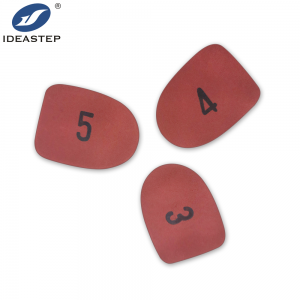
Heel wedges are commonly used in the field of podiatry and footwear to provide support, stability, and alignment for the feet. The main functions of heel wedges include:
1. Correction of Overpronation or Supination
Heel wedges can be used to address issues such as overpronation (excessive inward rolling of the foot) or supination (excessive outward rolling of the foot). Placing a wedge on the inner or outer side of the heel helps to realign the foot and improve its natural gait pattern.
2. Leg Length Discrepancies
Heel wedges can be used to compensate for leg length discrepancies. Placing a wedge under the shorter leg’s heel, helps to level the pelvis and ensure proper alignment of the spine.
3. Reduction of Achilles Tendon Strain
Heel wedges can also be used to alleviate strain on the Achilles tendon. Elevating the heel slightly, reduces the tension on the tendon, providing relief for conditions such as Achilles tendonitis.
4. Plantar Fasciitis Support
Heel wedges can assist in managing plantar fasciitis, a common condition characterized by inflammation of the plantar fascia. They help to offload pressure from the affected area, reduce pain, and promote healing.
5. Foot and Ankle Stability
Heel wedges can enhance stability for individuals with weak or unstable ankles. By providing a supportive incline, they help to prevent excessive rolling or twisting of the foot, reducing the risk of ankle sprains or other injuries.
It is important to note that the use of heel wedges should be advised and implemented by healthcare professionals, such as podiatrists or orthotics, who can assess individual needs and prescribe appropriate interventions based on specific foot conditions or concerns.
Expand more related content: https://www.aideastep.com/heel-pads/.
